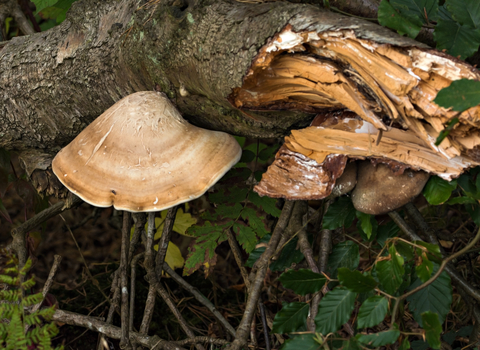
Birch Polypore ©Bob Coyle
Birch polypore
The birch polypore only grows on Birch trees. This leathery bracket fungus has a rounded, coffee-coloured cap that was once used for sharpening tools, hence its other name: the 'Razorstrop fungus'.

Birch Polypore ©Bob Coyle